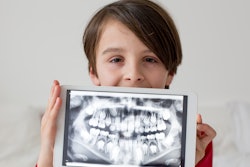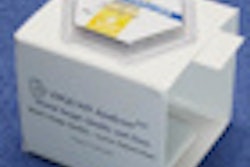Dental x-rays can be used to predict a person's risk of bone fractures, according to a study in Bone (October 2011, Vol. 49:4, pp. 873-879).
In previous research, a team from the University of Gothenburg's Sahlgrenska Academy and Region Västra Götaland demonstrated that a sparse bone structure in the trabecular bone in the lower jaw is linked to a greater chance of having previously had fractures in other parts of the body.
For this latest study, the Gothenburg researchers demonstrated that it is possible to use dental x-rays to investigate the bone structure in the mandible and thus predict who is at greater risk of fractures in the future.
"We've seen that sparse bone structure in the lower jaw in midlife is directly linked to the risk of fractures in other parts of the body later in life," said Lauren Lissner, a researcher at the Institute of Medicine at the Sahlgrenska Academy, in a press release.
The study draws on data from the Prospective Population Study of Women in Gothenburg started in 1968. It included 731 women, who have been examined on several occasions since 1968, when they were 38 to 60 years old. X-ray images of their mandibles were analyzed in 1968 and 1980, and the results related to the incidence of subsequent fractures.
For the first 12 years, fractures were self-reported during follow-up examinations. It is only since the 1980s that it has been possible to use medical registers to identify fractures, the study authors noted. A total of 222 fractures were identified during the entire observation period.
The researchers found that the bone structure of the jaw was sparse in around 20% of the women ages 38 to 54 when the first examination was carried out, and that these women were at significantly greater risk of fractures. In addition, the older the person, the stronger the link between sparse bone structure in the mandible and fractures in other parts of the body.
Although this study involved only women, the researchers believe the link also applies to men.



















